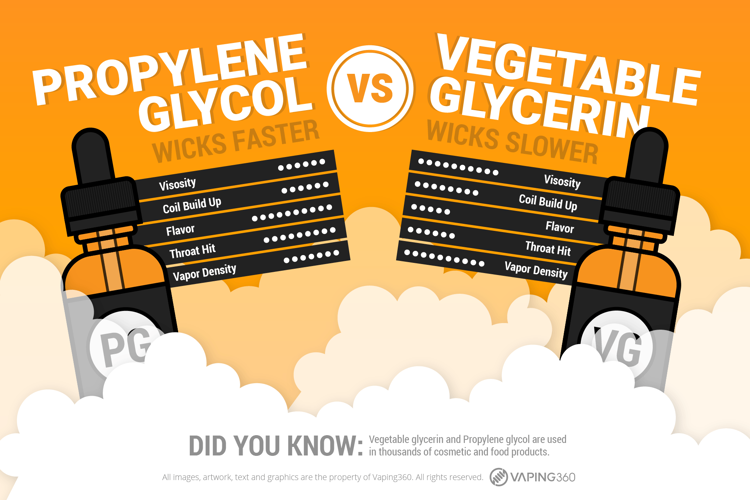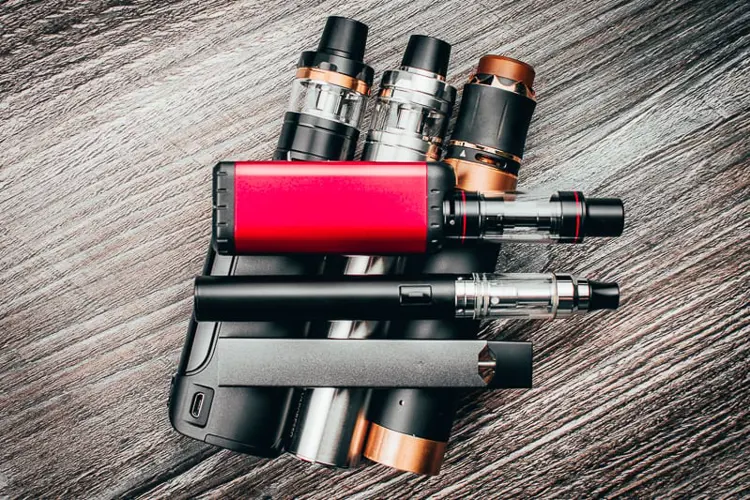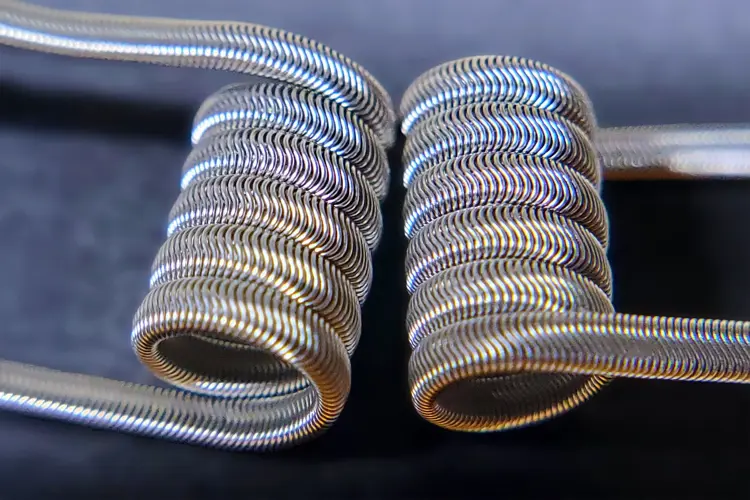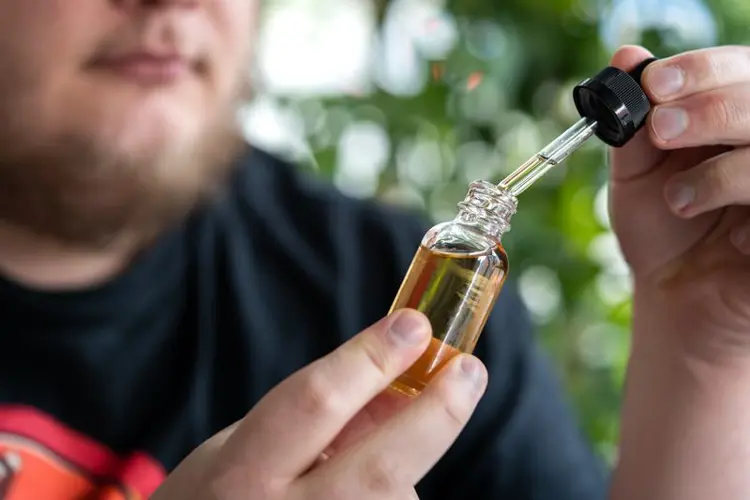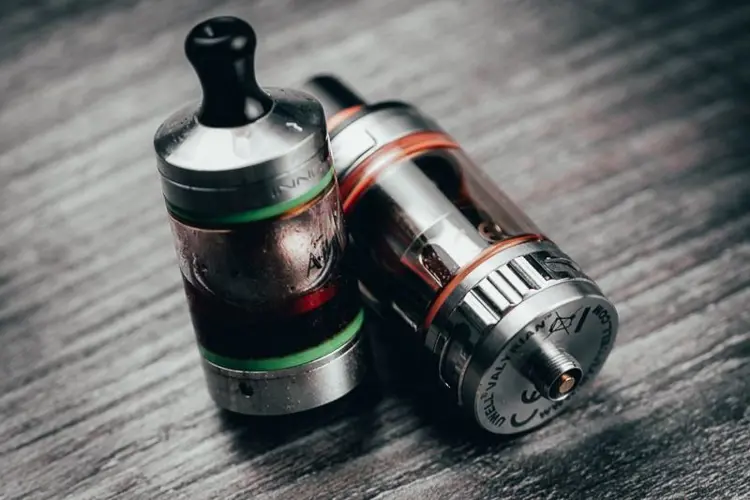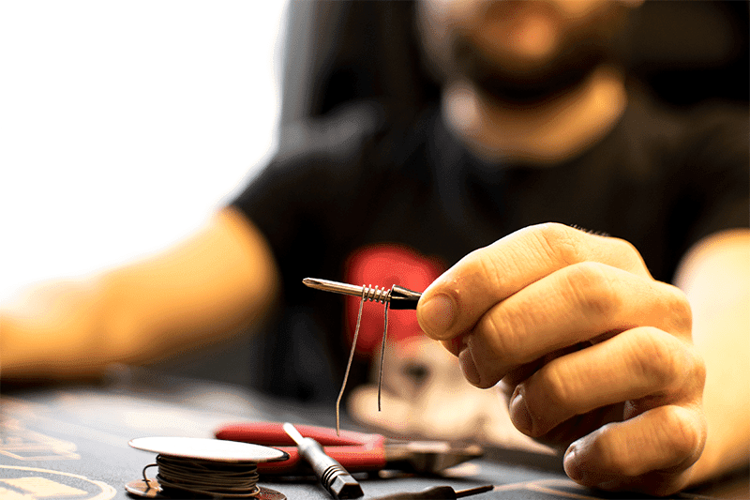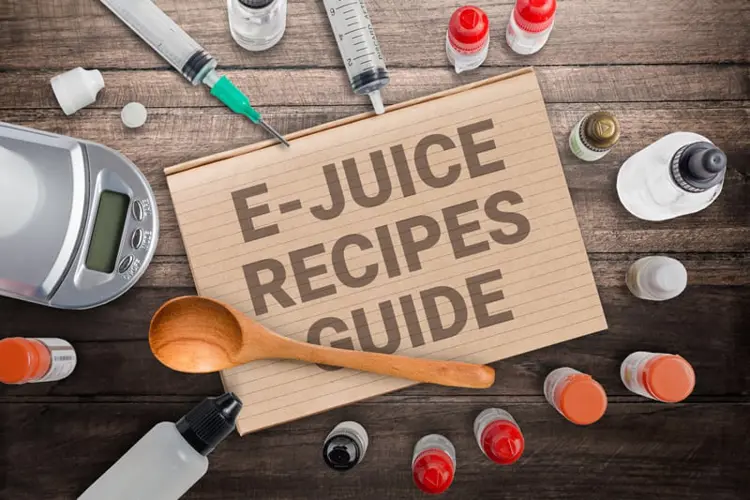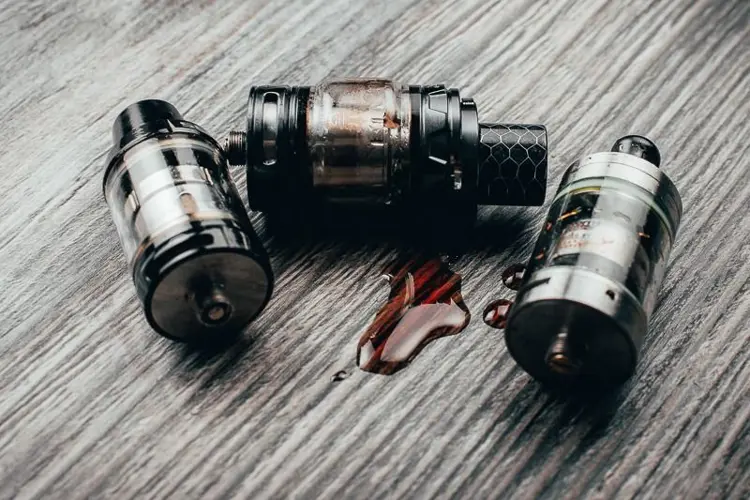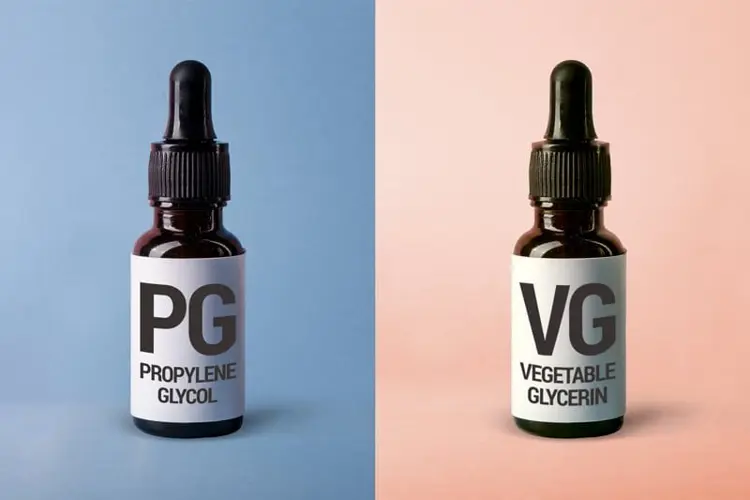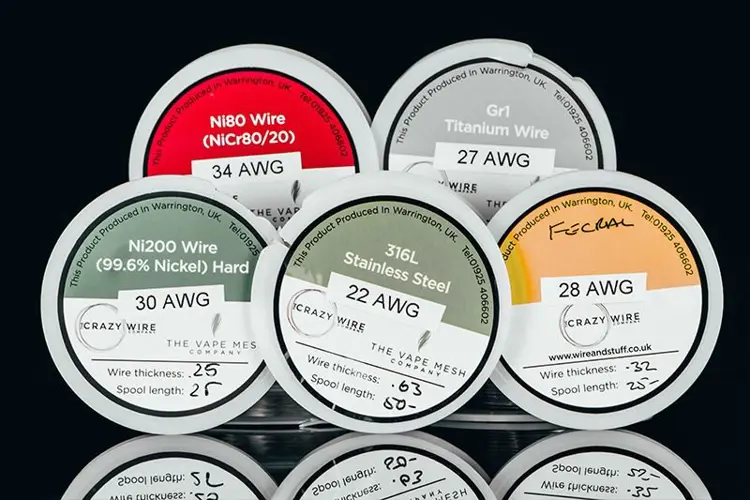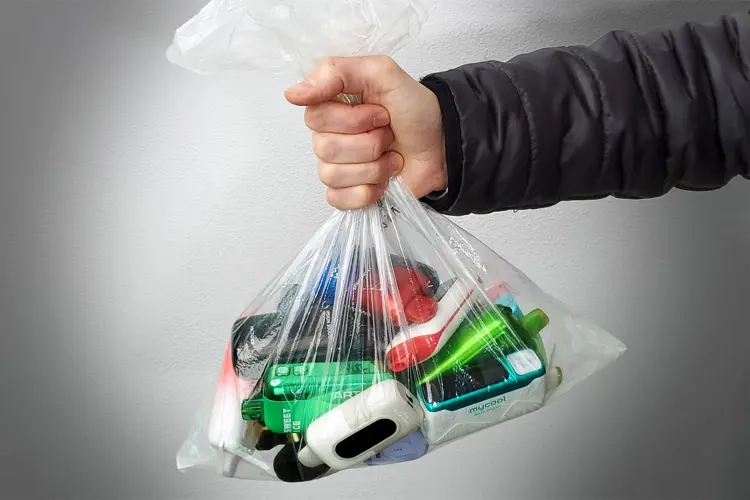VG (Vegetable Glycerin) vs. PG (Propylene Glycol)
The two most common terms associated with e-juice are VG and PG. This can seem confusing to the newcomer, but knowledge of these two ingredients can improve your vaping experience.
What are PG and VG?
In simple terms:
- PG and VG are the odorless liquids that are combined with flavor and nicotine to create e-juice.
- Both PG and VG technically belong to the alcohol chemical class (despite the name, they are not intoxicating). They are classified as sugar alcohols and are included in many consumable products.
- They produce vapor when heated, which allows them to be inhaled.
- PG and VG are not oils, and can’t cause any of the medical issues—like lipoid pneumonia—that inhaling actual oils can.
- The two fluids have a different consistency to each other and a slightly different taste.
- They have distinct mouth and throat sensations when vaped.
- Most modern e-liquid uses a combination of the two fluids, though the ratio can vary dramatically.
- Some beginner vapes can only work with a certain level of PG and VG.
Choosing the wrong PG/VG ratio can put first-timers off so be careful to choose the right level for your equipment.
Now let’s take a look at each in more detail.
PROPYLENE GLYCOL (PG)

What exactly is it?
PG stands for Propylene Glycol, a petroleum by-product. The fluid has no odor or color and is less viscous than VG. In vaping it is used to provide a ‘throat hit’, which some users claim is similar to the sensation experienced when smoking tobacco. It also carries flavor more effectively than VG, making it the most commonly used suspension fluid for flavor concentrates and nicotine.
How is it used?
Propylene Glycol can be found in various common household items. Amongst others, these include:
- Nicotine inhalers
- Toothpaste and other oral hygiene products
- Medical products used orally, injected or as topical formulations
- Pet food (excluding cat food)
- Beauty products, including make-up, shampoo and baby wipes
Is it safe?
Studies have shown that PG is safe to ingest orally, and the FDA has deemed it “generally recognized as safe” to be used as a food additive. However, most studies into the safety of propylene glycol look at ingestion, rather than consuming it in aerosol form. Of the limited studies that exist, a long-term experiment held in 1947 judged that inhaling PG was ‘completely harmless’.
A 2010 study looking at PGEs (a mixture of propylene glycol and glycol ethers) suggested an increased risk of developing respiratory and immune disorders in children, such as asthma, hay fever and eczema. However, it was judged that glycol ethers, and not PG, are the more likely cause. Looking at the evidence, it is sensible to assume that PG is safe to be inhaled, but there is a need for more comprehensive studies to confirm this.
Many misinformed scaremongering stories in the media claim that PG is a toxic substance used in anti-freeze. However, there are two types of anti-freeze: toxic and “non-toxic”. The toxic anti-freeze uses the dangerous substance referred to as ethylene glycol, which is not used in vaping. PG-based anti-freeze is used in food-processing machinery where toxic anti-freeze could be problematic.
While PG is regarded as safe for humans and is generally regarded as safe as a food additive for dogs, it has been linked to Heinz body anemia in cats. Be careful when vaping around cats, particularly if you use PG in your e-liquid.
What should I be aware of when vaping PG?
Some people find a high level of PG irritating to the throat. True allergies to PG are rare, but have been reported. If you find yourself coming out in a rash or suffering other unpleasant reactions after using PG-based e-fluid, you may have a more common mild sensitivity to PG, and should look at using high-VG juice instead. Many vendors offer this option.
The most common side effects of using e-liquid containing propylene glycol are symptoms of dehydration, like dry mouth, sore throat, and increased thirst. It is advised to drink more water and liquids than usual for the first few weeks of using your e-cigarette. If hydrated properly, these symptoms usually last anywhere from a few days to a week as the body gets used to the propylene glycol. Be aware that any unusual reactions could be side effects from quitting smoking, and not necessarily because of the PG.
VEGETABLE GLYCERIN (VG)

What exactly is it?
VG stands for Vegetable Glycerin. It is a natural chemical, derived from vegetable oils, so is safe for vegetarians. It is commonly used in e-liquid to give a ‘thick’ sensation to vapor. VG has a slightly sweet taste and is considerably thicker than PG. Vegetable Glycerin provides a much smoother throat hit than Propylene Glycol, making it more suitable for sub-ohm vaping. While nicotine and flavorings are commonly suspended in PG, some vendors are offering a VG alternative, to enable 100% VG mixes.
What is it used for?
Again, it can be found in numerous medical, food and personal care products:
- Sweetener as sugar replacement
- Beauty products, such as make-up, mousse, bubble bath, aftershave, and deodorant
- Pet food
- Soap and hand cream
- Food such as baked goods, to increase moisture
- To provide a thickening agent for certain medicinal creams, capsule pills, and jellies
- Toothpaste and other dental care products
Is it safe?
The FDA has classified VG as “generally recognized as safe” for eating, and it is widely regarded as one of the most benign substances known to man. The SIDS assessment profile show it to have low toxicity when consumed, and low potential to irritate the skin or eye. This, along with the widespread use of VG in food and medicine suggest it is safe for humans. However, as with PG, there are limited studies on VG being inhaled as opposed to ingestion.
A 2008 study of the toxicity of inhaling aerosolized glycerol found minimal risks. We can assume the use of VG in vaping has no serious impact on health but, as with PG, we welcome more detailed studies.
It is important to note that the risk of being allergic to vegetable glycerin is very low, making it a useful alternative for people who have issues when vaping e-juice containing PG. If you are allergic to palm oil or coconut oil then VG could prove a problem, but this is relatively uncommon. Diabetics could possibly experience problems with metabolizing VG, but this would not be an issue at the levels used in vaping.
What should I be aware of when using VG?
The increased thickness of VG means it can reduce the life of atomizers quicker than PG-based juice. High VG liquids clog up coils more rapidly, and will not work well, if at all, in certain tanks. Older products are especially susceptible, particularly models that use smaller coils such as clearomizers. The Nautilus range and eGo tanks are some of the more well-known tanks that are known to have difficulties dealing with high VG fluid.
As with PG, the most common side effects of vaping high VG e-liquid are those of dehydration: dry mouth, sore throat, and increased thirst. Again, be sure to drink plenty of water and take a break from vaping if necessary.
What VG/PG ratio should I use?
There isn’t a one-size-fits-all answer to this. It depends on the kind of vaping experience you prefer. Many people use various levels of PG and VG for different purposes:
- Throat Hit – If you enjoy a sharp throat hit when vaping then you’ll prefer a high PG vape. The ‘kick’ at the back of the throat, is something many ex-smokers crave, and PG (along with the nicotine) provides more of this than VG. PG carries flavor marginally better than VG, so the flavor will be slightly improved.
- Smoothness – High VG fluid tends to give a much smoother feeling on the throat, with a more substantial, ‘thicker’ mouthfeel. The flavor is slightly muted in VG fluids, but this can be countered by using more power to produce more vapor. Be careful to stay within the voltage/wattage limits of your atomizer, or you risk dry hits, or even damaging your equipment.
- Stealth Vaping – If you want to keep your vaping lowkey in public then high PG is the way to go. Less vapor is produced when exhaled, making this ideal for the less ostentatious vaping enthusiast. However, you should always apply common sense. Vaping in certain places, such as waiting rooms and on public transport, is often outlawed and is simply bad manners. As vaping is relatively new, we have a duty to be aware of public opinion and behave responsibly.
- Cloudchasing – Cloudchasing involves exhaling dense clouds of vapor. There are even competitive events based around this activity, where the person producing the biggest clouds wins. If this appeals, then high VG is the only option – the higher the better.
What kind of set-up do I need?
It isn’t as simple as deciding on a high VG or PG vape juice and hoping for the best. It all comes down to your equipment. If it isn’t suitable for the job, it can lead to unpleasant throat irritation or wicking problems resulting in dry hits.
- Clearomizers – The clearomizer is one of the most common styles of tanks for vaping. It includes the timeless Aspire Nautilus series of tanks. These take higher resistance coils and are usually vaped below 15 watts. Clearomizers are not generally suitable for high VG fluids, as their coils cannot cope well with thick fluid; it can lead to unpleasant dry hits of burning cotton. It is advised to use high PG fluid, or a 50/50 ratio, when using this kind of tank.
- Sub-Ohm Tanks – Tanks like the SMOK TFV Series, for example. They can take a lot more power than standard clearomizers and are designed to deal well with high VG juice. Consider this the racing car of vaping that needs high performance octane in the tank. Requiring high battery strength, these tanks use up e-juice a lot quicker, just like a gas guzzler. If you want to know more about this, check our detailed guide to sub-ohm vaping.
- Rebuildables – If you prefer to make your own coils, you have a lot more flexibility on your e-liquid ratio. It still depends on the coils you use but you don’t have to worry as much about your cotton wicking properly. As always, the ratio boils down to personal preference, but the norm for coil resistances of premade coils works out the same for rebuildables – sub-ohm coils for high VG, higher resistance coils for 50/50 or high PG.
Tips for finding your sweet spot
The best way to find your PG/VG ‘sweet spot’ to experiment by making your own e-juice. It’s surprisingly easy to do, and very cost-effective. You can check this out in more detail in our DIY e-liquid guide, but here are some things to be aware of:
- Steeping – If you make high VG juice, you might find this will take longer to steep. This is especially relevant to complex multi-flavor recipes. Single-flavor recipes using a high PG ratio will often take less time to steep, and sometimes be ready immediately. You can read more about this in our detailed guide to steeping e-juice.
- Flavorings – The majority of flavor concentrates available are suspended in PG. It’s important to factor this in when making high VG e-juice as the higher the quantity of flavor used, the more the VG level drops. It is possible to buy flavorings suspended in VG but this is less common.
- Thinning Juice – If you have made juice with a high VG ratio, your coil might have problems with wicking the thick gloopy fluid. If you don’t want to use PG, the solution is to add some distilled water to your juice—maybe a drop per 10 mL—to help thin it out. This will help the cotton absorb the fluid quicker. Don’t go overboard here… a drop goes a long way.
- Unflavored juice – Want to find your sweet spot without wasting valuable resources? Try mixing VG and PG in different ratios. Using only base liquid and some cheap plastic e-liquid bottles you can find the optimal juice viscosity for your gear and avoid dry hits and leaking. This is also
Conclusion
The basics of PG and VG are quite easy to grasp. They both work in different ways, and each has advantages and disadvantages. Our advice is to start with a 50-50 PG to VG ratio then try out various combinations and see which you prefer. Make sure your vaping setup can deal with the different ratios.
Many vapers like to use different levels of PG and VG at different times, and with various devices and flavors. Tobaccos, fruits and beverage flavors often go well with PG, as the sharpness of the PG blends well with the tart or fizz of the flavoring. Similarly, flavors based on cream, custard and yogurt tend to work well with high VG as the thick mouth sensation adds to the dessert-like feel. There are no fixed rules, just follow what your taste buds tell you!
President Trump promised during his election campaign to “save vaping," but his administration has undermined that goal at every turn.
The U.S. disposable vape market has grown to $2 billion in annual sales, although nearly none of the products are authorized by the FDA.
More than 30 bills that would impose severe restrictions vaping consumers’ product choices remain active in U.S. state legislatures.
The Freemax REXA PRO and REXA SMART are highly advanced pod vapes, offering seemingly endless features, beautiful touchscreens, and new DUOMAX pods.
The OXVA XLIM Pro 2 DNA is powered by a custom-made Evolv DNA chipset, offering a Replay function and dry hit protection. Read our review to find out more.
The SKE Bar is a 2 mL replaceable pod vape with a 500 mAh battery, a 1.2-ohm mesh coil, and 35 flavors to choose from in 2% nicotine.

